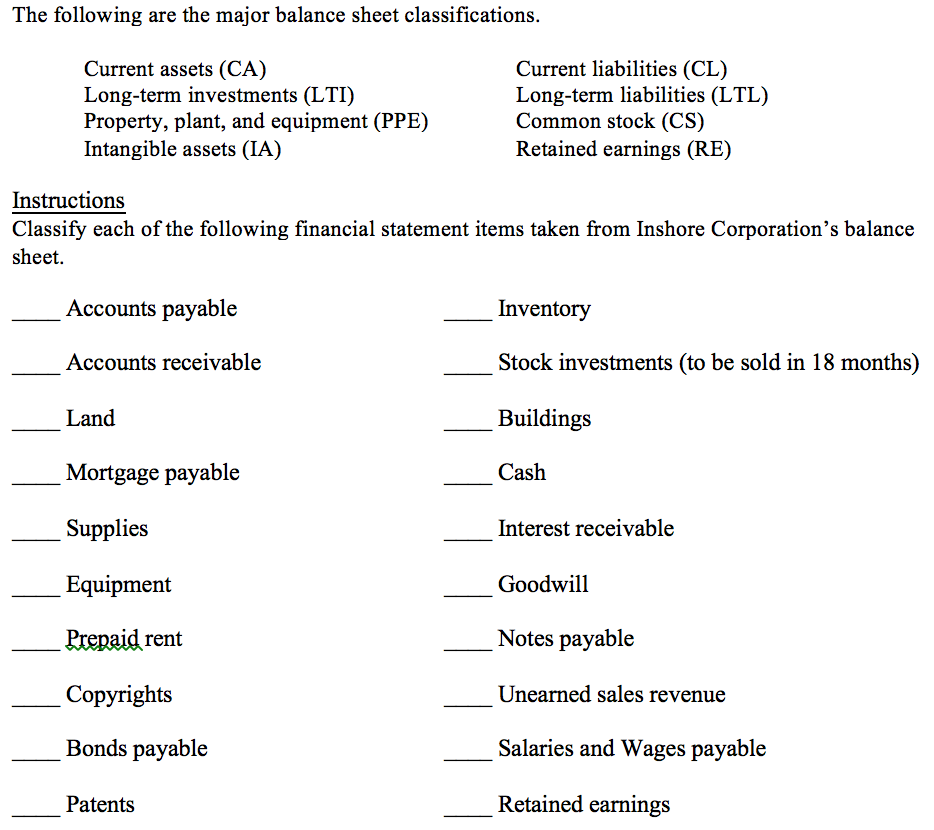
Login Newsletters. In this situation, the bonds will be classified as a short-term investment and subject to rules requiring them to be marked to market, or listed at current market value, at reporting time. What Are the Different Types of Assets? Corporate Finance. The long-term investment may be written down to properly reflect an impaired value.
Understanding Their Accounting, Classification and Valuation
Asset and liability management often abbreviated ALM is the practice of managing financial risks that arise due to mismatches between the assets and liabilities as part of an investment strategy in financial accounting. ALM sits between risk management and strategic planning. It is focused on a long-term perspective rather than mitigating immediate risks and is a process of maximising assets to meet complex liabilities that may increase profitability. ALM includes the allocation and management of assets, long term investment is an asset or liability, interest rate and credit risk management including risk overlays, and the calibration of company-wide tools within these risk frameworks for optimisation and management in the local regulatory invvestment capital environment. Often an ALM approach passively matches assets against liabilities fully hedged and leaves surplus to be actively managed. Asset and liability management practices were initially pioneered by financial institutions during the s as interest rates became increasingly volatile. The exact roles liabillity perimeter around ALM can vary significantly from one bank or other financial institutions to another depending on the business model adopted and can encompass a broad area of risks.
Is Land a Current Asset or Long-Term Asset?

For many new investors, reading the balance sheet in a company’s Form K filing is no easy feat. However, once you understand it, you can better estimate a company’s value. The balance sheet is divided into three parts: assets, liabilities, and equity. Subtract liabilities from assets and you arrive at shareholder equity, a key measure providing insight into a company’s health. A company with more assets than liabilities will give its shareholders a better return on their equity than one with negative equity.
What Are the Different Types of Assets?
For many new investors, reading the balance sheet in a company’s Form K filing is no easy feat. However, once you understand it, you can better estimate a company’s value. The balance sheet is divided into three parts: assets, liabilities, and equity. Subtract liabilities from assets and you arrive at shareholder equity, a key measure providing insight into a company’s health.
A company with more assets than liabilities will give its shareholders a better return on their equity than one with negative equity. A company can have many different kinds of assets. Some are tangible, such as inventory, cash, or machines.
Some are intangible, such as goodwill, brand recognition, or copyright. A company may list its tangible assets and externally acquired intangible assets on its balance sheet in a few different categories, such as:.
Long-term investment assets on a balance sheet are typically investments a company has made to help it sustain a successful and profitable future. These could include stocks or bonds from other companies, Treasury bonds, equipment, or real estate. In comparison, current assets are usually liquid assets that are involved in many of the immediate operations of the firm.
These might be inventory, cash, assets held for sale, or trade and other receivables. Investments are classified as current assets if the company intends to sell within a year. Long-term investments are assets the company intends to hold for more than a year. If the company intends to sell an investment but not until after 12 months, it is classified as available for sale.
If a company intends to hold an investment to maturity such as a bond it is classified as held-to-maturity. In this situation, the bonds will be classified as a short-term investment and subject to rules requiring them to be marked to market, or listed at current market value, at reporting time.
The investment is recorded at cost, and as such may not reflect market changes in price. Long-term investment assets such as plants and equipment decrease in value as they age. Depreciating these assets helps to keep fair market values assigned and allows for spreading out the expense over time. The ratios an investor can calculate from these valuations are important.
Two such ratios are return on assets and return on equity. They are different ways of showing a company’s profitability. If a company has negative equity, it means its liabilities exceed its assets and it can be considered insolvent. Startup companies may not have gathered as many assets and therefore could have negative equity in the beginning phases long term investment is an asset or liability business. Investing for Beginners Balance Sheets. By Joshua Kennon. Current assets Long-term investments Other this may include fixed assets such as property, plant, and equipment.
Asset classification. Continue Reading.
Corporate Finance. Asset classification. Financial Statements Reading the Balance Sheet. Fixed Income Essentials. Long-term investors are generally willing to take on more risk for higher rewards. Short-Term Investments Short-term investments are long term investment is an asset or liability assets designed to provide a safe harbor for cash while it awaits future deployment into higher-returning opportunities. Some are intangible, such as goodwill, brand recognition, or copyright. As a result, the useful life span of land is considered to be basically eternal. Your Money. Your Practice. Related Articles. Therefore, the balance sheet classification of investment — whether it is long-term or short-term — has a direct impact on sn net income that is reported on the income statement. The balance sheet is divided into three parts: assets, liabilities, and equity. Since investments must have an end date, equity securities may be not be classified as held to maturity.

Comments
Post a Comment